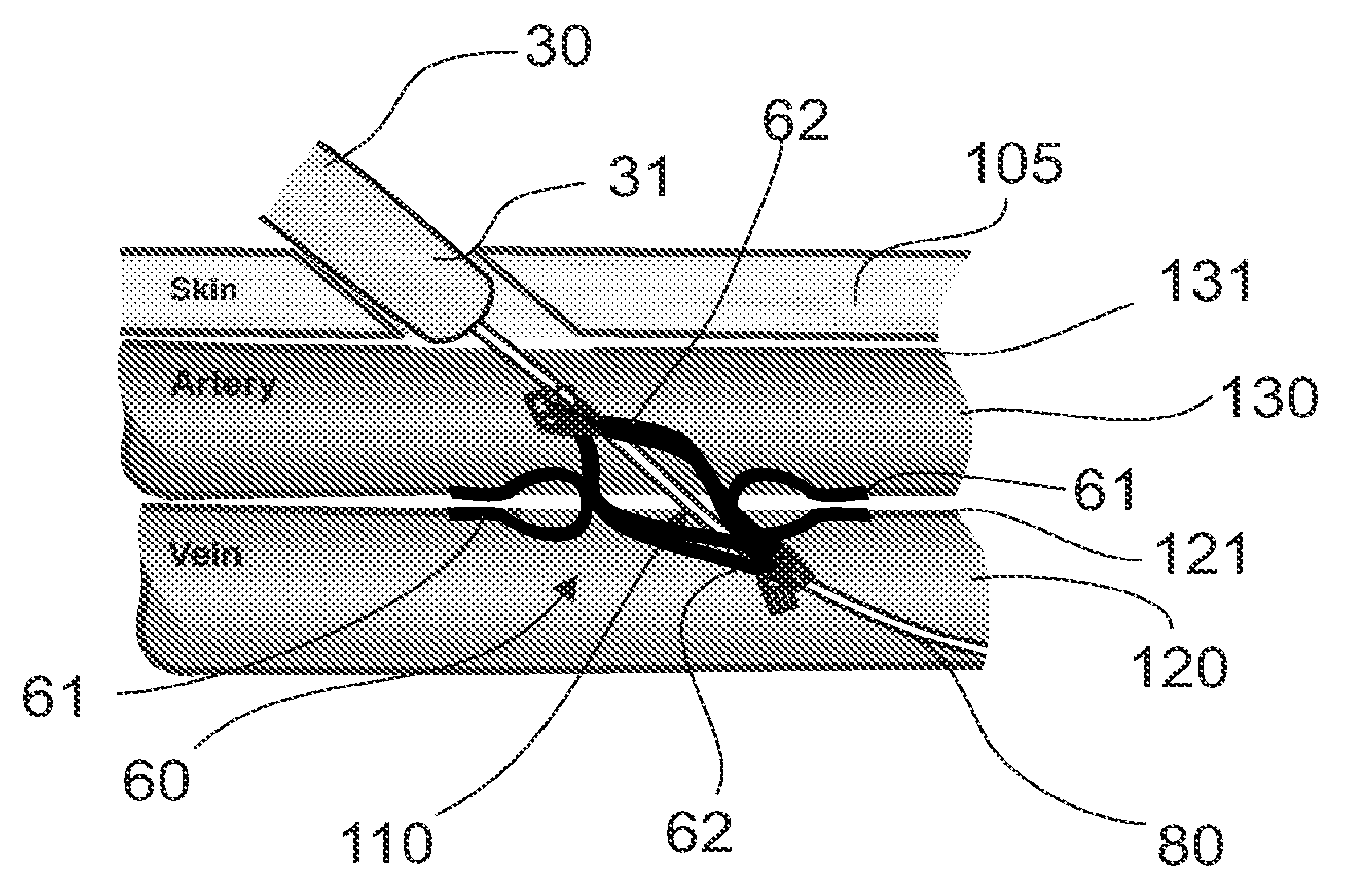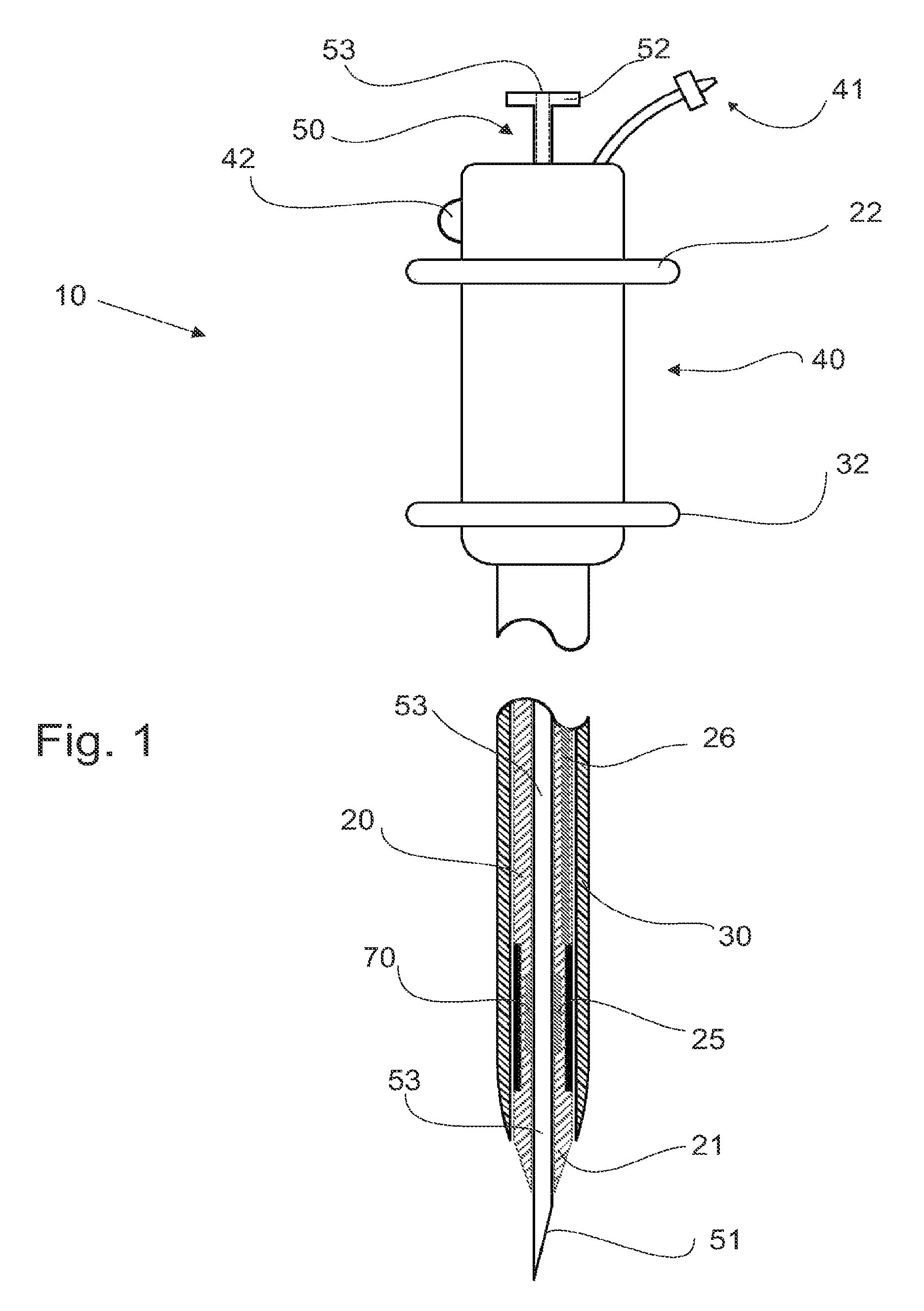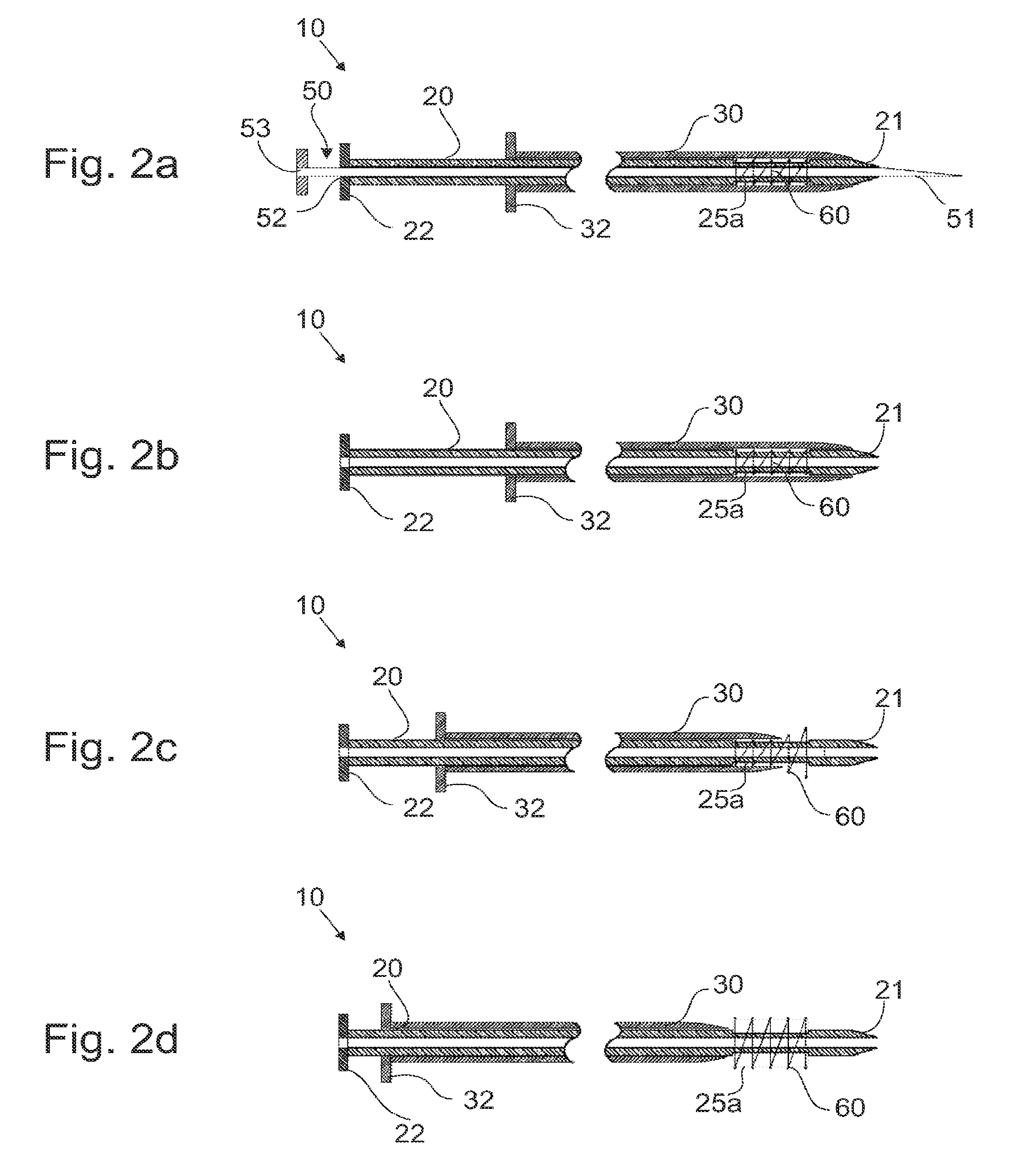Devices, systems and methods for creation of a peripherally located fistula
a peripherally located and device-based technology, applied in the field of medical devices and methods, can solve the problems of long recovery time and not always providing clear patient benefits, and achieve the effects of reducing neointimal proliferation, preventing tissue from protruding into the fistula flow path, and reducing bleeding of tissue neighboring
- Summary
- Abstract
- Description
- Claims
- Application Information
AI Technical Summary
Benefits of technology
Problems solved by technology
Method used
Image
Examples
Embodiment Construction
[0037]Reference will now be made in detail to the present embodiments of the invention, examples of which are illustrated in the accompanying drawings. Wherever possible, the same reference numbers will be used throughout the drawings to refer to the same or like parts.
[0038]FIG. 1 depicts a preferred embodiment of the fistula creation device of the present invention. Device 10 is configured to be inserted by an operator through the skin of a patient to create and / or maintain a fistula that provides a flow of blood between a first vessel and a second vessel, such as a long-term flow of blood to achieve a therapeutic benefit. Device 10 includes an elongate tubular structure with a proximal end and a distal end, the tubular structure comprising multiple tubes that surround or are slidingly received within a separate tube. Each tube may have a rigid, semi-rigid, and / or flexible construction and each tube comprises one or more materials such as: nylon; polyvinyl chloride; polyethylene; ...
PUM
 Login to View More
Login to View More Abstract
Description
Claims
Application Information
 Login to View More
Login to View More - R&D
- Intellectual Property
- Life Sciences
- Materials
- Tech Scout
- Unparalleled Data Quality
- Higher Quality Content
- 60% Fewer Hallucinations
Browse by: Latest US Patents, China's latest patents, Technical Efficacy Thesaurus, Application Domain, Technology Topic, Popular Technical Reports.
© 2025 PatSnap. All rights reserved.Legal|Privacy policy|Modern Slavery Act Transparency Statement|Sitemap|About US| Contact US: help@patsnap.com



